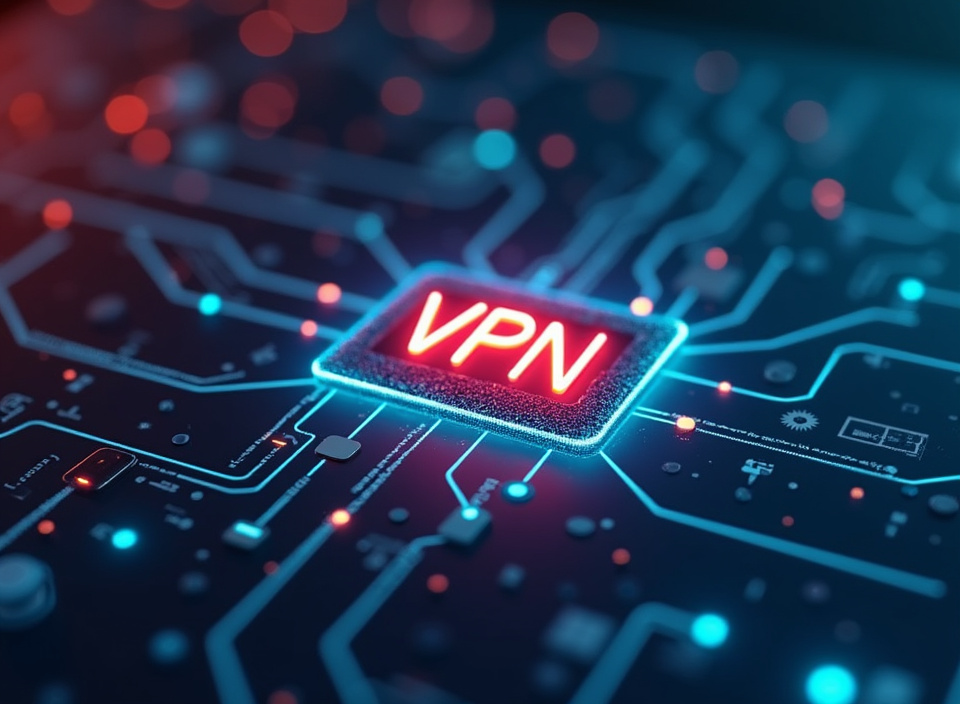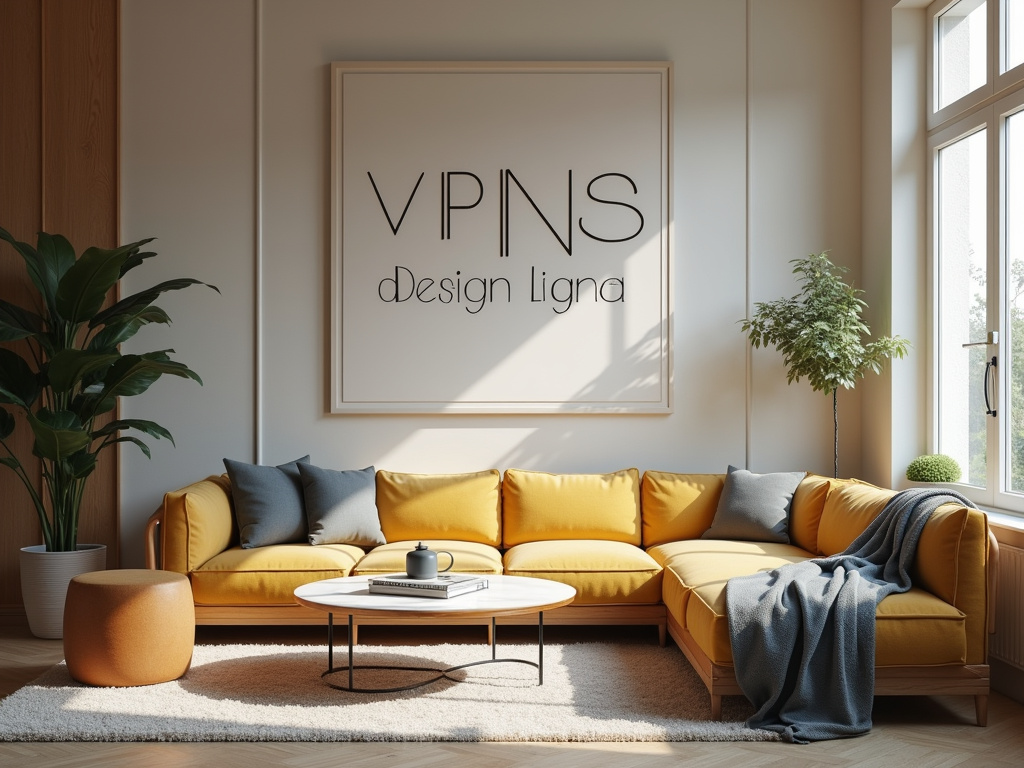VPNs for Graphic Designers: Protecting Design Files

Table of Contents
VPNs for Graphic Designers: Protecting Design Files in a Digital Age
In an era where digital creativity reigns supreme, graphic designers navigate a complex web of interconnected networks, collaborative platforms, and online resources. This digital landscape, while offering unprecedented opportunities for innovation and reach, also introduces a unique set of security challenges. Design files, the very lifeblood of a graphic designer's profession, represent not only hours of meticulous work but also valuable intellectual property and sensitive client information.
These files, ranging from initial sketches and mockups to final deliverables, are increasingly vulnerable to cyber threats, data breaches, and unauthorized access. Protecting these assets is no longer a luxury but a necessity for any graphic designer seeking to maintain their professional integrity, safeguard client trust, and ensure the long-term viability of their business. This article delves into the critical role that Virtual Private Networks (VPNs) play in fortifying the digital defenses of graphic designers, providing a secure and reliable means of protecting their design files and sensitive communications.
A graphic designer VPN offers a multi-faceted approach to security, serving as a protective shield against a range of online threats. At its core, a VPN creates an encrypted tunnel between the designer's device and a remote server, effectively masking their IP address and anonymizing their online activity. This encrypted tunnel prevents third parties, such as hackers, snoopers, and even internet service providers (ISPs), from intercepting or monitoring the data transmitted between the designer's device and the internet.
This is particularly crucial when transferring large design files over public Wi-Fi networks, which are notoriously insecure and prone to eavesdropping. The need for enhanced design file security is further compounded by the growing trend of remote work and the increasing reliance on cloud-based storage and collaboration platforms. While these technologies offer unparalleled flexibility and convenience, they also introduce new security risks.
Design files stored in the cloud are potentially vulnerable to data breaches and unauthorized access, while remote collaboration tools can be exploited by malicious actors to intercept sensitive communications. A VPN mitigates these risks by encrypting the data transmitted to and from cloud storage providers and collaboration platforms, ensuring that design files remain protected even if the underlying infrastructure is compromised. Moreover, a VPN is not merely a defensive tool; it can also enhance productivity and streamline the design process.
By bypassing geographical restrictions, designers can access fonts, stock images, design templates, and other essential resources that might otherwise be unavailable in their region. This can save considerable time and effort, allowing designers to focus on their creative work rather than grappling with technical limitations. The ability to access a wider range of resources can also lead to more innovative and impactful designs.
The benefits of VPNs extend beyond individual designers to encompass entire design teams and agencies. When multiple designers collaborate on a project from different locations, a VPN can create a secure, virtual workspace where files can be shared and edited without fear of interception. This is especially crucial for teams that are geographically dispersed and rely heavily on remote communication tools such as video conferencing and instant messaging.
A VPN ensures that all communication and file sharing within the team remains confidential and protected from unauthorized access. Protecting client interaction is also of paramount importance for graphic designers. Client communications often involve sensitive information, such as project briefs, feedback on design iterations, and legal agreements.
A VPN provides a secure channel for these communications, preventing eavesdropping and safeguarding client confidentiality. This is especially crucial when exchanging sensitive information over email or instant messaging, which are often vulnerable to interception by malicious actors. Therefore, using a VPN allows for peace of mind and allows the creative process with third parties to be undisturbed by possible security issues.
Second section subtitle
The landscape of cyber threats is constantly evolving, and graphic designers must remain vigilant in their efforts to protect their creative content. Traditional security measures, such as firewalls and antivirus software, are essential but often insufficient to address the specific vulnerabilities faced by designers. A VPN for designers provides an additional layer of protection, mitigating the risks associated with data breaches, intellectual property theft, and online surveillance.
Creative Content Protection is a concept encompassing preventative measures to deter abuse and infringements of a creator’s original work. When you create digital art, images, music, videos, or written documents, you automatically hold the copyright to that content. That said, the internet is an enormous place with many opportunities for criminals to steal and profit from your hard work.
Criminals steal creative content either to sell or to use for their own personal gain without providing any attribution or royalties. They can even even infringe on the creator's license and rights on the digital product. A strategic, comprehensive approach to creative content protection can help secure your work.
One of the most valuable benefits of a VPN is its ability to obfuscate the user's true IP address. When connected to a VPN server, the designer's IP address is replaced with the IP address of the VPN server, effectively masking their location and identity. This makes it significantly more difficult for hackers and snoopers to track their online activity and identify their physical location.
This is particularly important for designers who work remotely or travel frequently, as they may be connecting to public Wi-Fi networks that are inherently less secure. These networks, often found in coffee shops, airports, and hotels, are prime targets for hackers who can easily intercept unencrypted data transmitted over the network. A VPN encrypts all data transmitted between the designer's device and the VPN server, rendering it unreadable to anyone attempting to intercept it.
Moreover, a VPN can help designers circumvent geographical restrictions that may be imposed on certain websites or services. For example, a designer may need to access a website that is only available in a specific country or region due to copyright laws, licensing agreements, or government regulations. By connecting to a VPN server in that location, they can bypass the geographical restriction and access the desired content.
This can be particularly useful for designers who work with international clients or collaborate with teams located in different parts of the world. Preventing intellectual property theft is a central concern for most graphic designers. Design files, sketches, and concepts can be stolen and sold, leading to financial losses and reputational damage.
The ability to bypass censorship and access blocked websites or apps can also be greatly aided by a VPN. It allows designers a truly secure way of using such assets and circumventing local restrictions. Moreover, a VPN can protect designers from Distributed Denial of Service (DDoS) attacks, which can disrupt their workflow and prevent them from accessing critical resources.
DDoS attacks flood a server with traffic, overwhelming its capacity and rendering it unavailable to legitimate users. By masking their IP address and routing their traffic through a VPN server, designers can mitigate the impact of DDoS attacks and maintain their online presence. Some VPNs also offer DDoS protection, which can further enhance their ability to withstand these types of attacks.
Another underappreciated benefit of VPN use is secure file transfers. Secure File Transfer Protocol (SFTP) and FTPS are protocols used to transfer files over the internet. SFTP uses SSH to encrypt the data, while FTPS uses SSL/TLS.
Both protocols are designed to protect the data during transmission and help prevent unauthorized access. However, even with these protocols, the underlying network connection can still be vulnerable to eavesdropping. A VPN adds an additional layer of encryption to these file transfers, ensuring that the data remains protected even if the SFTP or FTPS connection is compromised.
Third section subtitle
Selecting the appropriate VPN solution requires careful consideration of several factors, including security protocols, server locations, speed and reliability, and ease of use. Not all VPNs are created equal, and some may offer better protection and performance than others. When evaluating VPN providers, it's essential to prioritize those that use strong encryption protocols, such as AES-256, which is considered the industry standard.
This ensures that the data is encrypted with a high level of security, making it extremely difficult for unauthorized parties to decrypt it. The number of server locations offered by a VPN provider is also an important consideration. A wide range of server locations allows designers to connect to servers in different regions, which can be useful for bypassing geographical restrictions or accessing content that is only available in certain countries.
It's also important to choose a VPN provider that has servers located close to your physical location, as this can improve connection speed and reduce latency. Speed and reliability are crucial factors for graphic designers, who often work with large files and require a stable internet connection. A slow or unreliable VPN can significantly impact productivity and disrupt the design process.
Therefore, it's essential to choose a VPN provider that offers fast connection speeds and a reliable network infrastructure. Look for VPN providers that use optimized servers and network protocols to minimize latency and maximize throughput. Ease of use is another important consideration, especially for designers who are not technically savvy.
A VPN should be easy to install, configure, and use, with a user-friendly interface and clear instructions. Some VPN providers offer dedicated apps for different operating systems and devices, which can simplify the installation and configuration process. It's also important to choose a VPN provider that offers good customer support, in case you encounter any issues or have questions about the service.
Beyond these key considerations, designers should also evaluate the VPN provider's privacy policy. A reputable VPN provider should have a clear and transparent privacy policy that outlines how they collect, use, and protect user data. It's important to choose a VPN provider that does not log user activity or share user data with third parties.
Some VPN providers even offer enhanced privacy features, such as a kill switch, which automatically terminates the internet connection if the VPN connection drops, preventing unencrypted data from being transmitted. Another factor to consider is the VPN provider's pricing and payment options. VPN providers offer a variety of pricing plans, ranging from free to premium.
Free VPNs often have limitations, such as slower speeds, limited server locations, and data caps. Premium VPNs typically offer faster speeds, more server locations, and unlimited data. For graphic designers who require reliable performance and robust security, a premium VPN is generally the best option.
Finally, it's important to read reviews and compare different VPN providers before making a decision. Online reviews can provide valuable insights into the performance, reliability, and customer support of different VPN providers. Comparing different VPN providers can help you find the best option for your specific needs and budget.
By carefully considering these factors, graphic designers can select a VPN solution that provides the optimal balance of security, performance, and ease of use, ensuring that their creative content remains protected in the digital age. Remember to always evaluate a wide variety of aspects, such as trial periods, money-back guarantees and the level of customer support.
Fourth section subtitle
Client interaction is a cornerstone of the graphic design process, and ensuring the security and confidentiality of client communications and data is paramount. From initial project discussions and brainstorming sessions to the exchange of design drafts and final approvals, every interaction carries the potential for sensitive information to be compromised. A VPN plays a crucial role in safeguarding these interactions, providing a secure channel for communication and data exchange.
Design file security during client interaction is not just a technical concern but also a matter of building trust and maintaining professional credibility. Clients entrust designers with their brand assets, confidential information, and creative vision, and it's the designer's responsibility to protect this information to the best of their ability. A VPN demonstrates a commitment to security, reassuring clients that their data is in safe hands.
Using a VPN during client interactions goes beyond simply encrypting data; it also helps to prevent man-in-the-middle attacks, where malicious actors intercept communications between the designer and the client. By encrypting the data stream, a VPN makes it significantly more difficult for attackers to eavesdrop on conversations or tamper with data being exchanged. This is particularly important when discussing sensitive topics such as pricing, contracts, or intellectual property rights.
Furthermore, a VPN can help to protect against phishing attacks, where attackers attempt to trick clients into revealing sensitive information by impersonating the designer or a trusted third party. By masking the designer's IP address and encrypting their internet traffic, a VPN makes it more difficult for attackers to target the designer or their clients with phishing scams. This is especially relevant in an age where phishing attacks are becoming increasingly sophisticated and difficult to detect.
In addition to protecting against external threats, a VPN can also help to prevent internal data breaches. By providing a secure channel for communication and data exchange, a VPN reduces the risk of accidental data leaks or unauthorized access by employees. This is particularly important for design agencies with multiple employees, as it ensures that all client data is protected regardless of who has access to it.
Another important aspect of client interaction is the secure exchange of design files. Large design files can be vulnerable to interception during transit, especially when sent over email or unencrypted file sharing services. A VPN provides a secure way to transfer these files, ensuring that they remain protected from unauthorized access.
Designers can use secure file transfer protocols, such as SFTP or FTPS, in conjunction with a VPN to ensure that their files are encrypted both during transit and at rest. Moreover, a VPN can help to ensure compliance with data privacy regulations, such as the General Data Protection Regulation (GDPR). GDPR requires organizations to take appropriate measures to protect the personal data of their clients, and using a VPN is a crucial step in meeting these requirements.
By encrypting client data and preventing unauthorized access, a VPN helps to ensure that the designer is complying with GDPR and other data privacy regulations. Overall, a VPN is an essential tool for graphic designers who want to protect their client interactions, build trust, and maintain professional credibility. By providing a secure channel for communication and data exchange, a VPN helps to prevent data breaches, man-in-the-middle attacks, and other online threats.
Thus, it is not merely a way to protect clients, but another facet of any business that involves sensitive data being transfered. This ensures that all parties are safe from a wide variety of attacks.
The integration of a VPN into a graphic designer's workflow is no longer a matter of optional precaution but a fundamental requirement for maintaining security, privacy, and professional integrity in the digital age. A well-integrated VPN strategy becomes a seamless and almost invisible layer of protection, working continuously in the background to safeguard creative content and client interactions. VPN for designers is not merely about installing software; it's about establishing a security-conscious mindset and incorporating best practices into every aspect of the design process.
One of the first steps in integrating a VPN into your workflow is to configure it to automatically connect whenever you start your computer or mobile device. This ensures that your internet traffic is always protected, even when you're working on the go or connecting to unfamiliar networks. Most VPN providers offer options to automatically connect on startup, making this a simple and straightforward process.
Another important aspect of integration is to choose a VPN provider that offers dedicated apps for all of your devices. This makes it easier to manage your VPN connection and switch between different servers, depending on your needs. Dedicated apps also often include features such as a kill switch and DNS leak protection, which further enhance your security and privacy.
Consider integrating your VPN with your cloud storage and file sharing services. This ensures that all data transmitted to and from these services is encrypted, preventing unauthorized access to your design files. Many cloud storage providers offer integrations with VPNs, making this a relatively easy process.
You should also make sure to use strong passwords and enable two-factor authentication for all of your online accounts, including your VPN, cloud storage, and email accounts. This adds an extra layer of security, making it more difficult for attackers to gain access to your accounts, even if they manage to compromise your password. Integrating a VPN into your email workflow is also essential for protecting your client communications.
Configure your email client to use a secure connection (SSL/TLS) and enable encryption whenever possible. You can also use a VPN to access your email through a web browser, which adds an additional layer of security. Communicate the importance of VPN usage to your clients and encourage them to use a VPN as well.
This helps to ensure that all communications between you and your clients are protected, regardless of who is initiating the communication. You can also provide your clients with resources and guidance on how to choose and use a VPN. Furthermore, establish clear security protocols for all of
Stay Updated
Get the latest VPN news, tips, and exclusive deals to your inbox.




